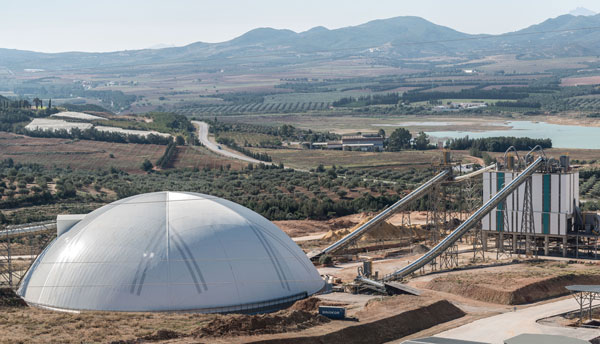Going under cover
Metal dome technology has ’covered’ an entire world of clinker, cement and raw materials facilities. During the handling of large volumes of dry bulk materials, cement companies are increasingly looking for ways to contain dust and other emissions that are both economical and environmentally-responsible. Until recently these two key benchmarks often appeared diametrically opposed, but advanced storage technology has succesfully enabled cement producers to meet these requirements. By Melanie Saxton, Geometrica Inc, USA.

The call for sustainable cement production has increasingly focussed on the need
to reduce emissions from storage facilities by building covered structures
Before the advent of eco-awareness and prior to the invention of cost-effective and lightweight galvanised steel enclosing solutions, raw materials and in-process stockpiles were simply left uncovered during the production of cement, clinker and aggregates. In some regions, this is still the case. But uncovered facilities often yield pollutants that can negatively impact surrounding protected natural and agricultural environments while production in urban areas affects the health and safety of neighbouring communities.
Bids for traditional, enclosed structures had simply been too expensive and could not offer the open-space infrastructure required for dust containment and maximum storage. As a stop-gap measure, some cement plants have experimented with spray systems or canvas coverings to control airborne debris. Still, this technology is far from ideal and does not fully solve the problem of airborne dust and contaminating runoff. A more economical and environmentally-friendly solution was required.

